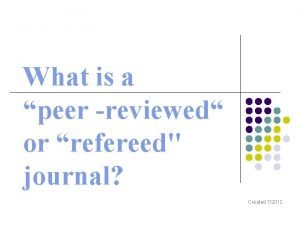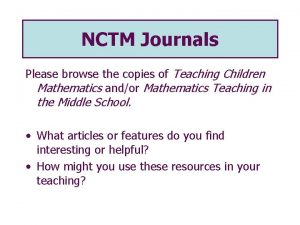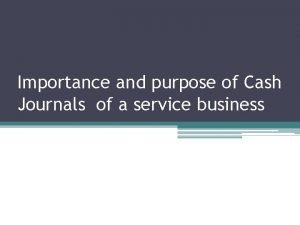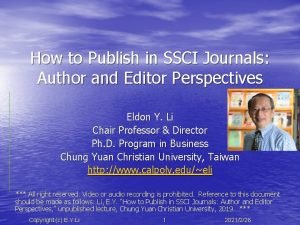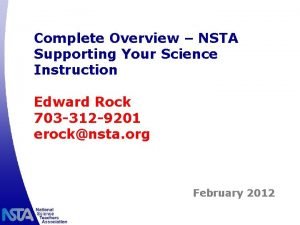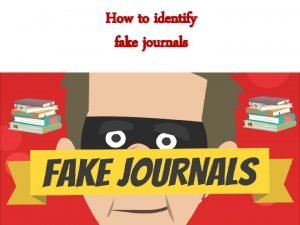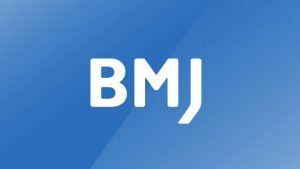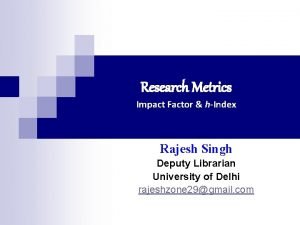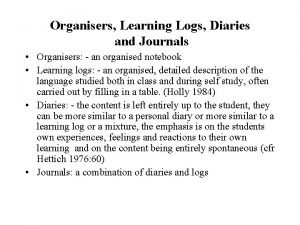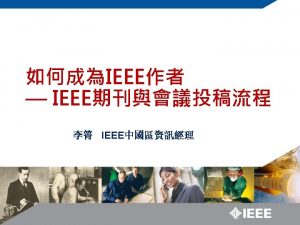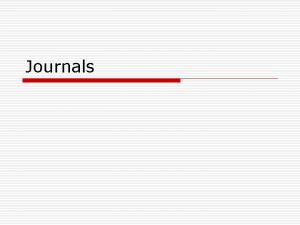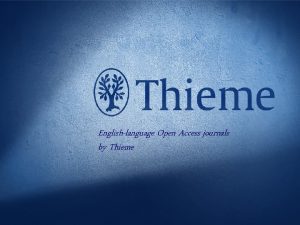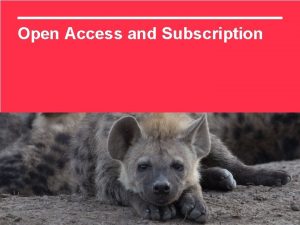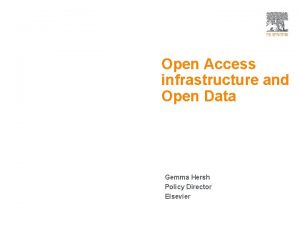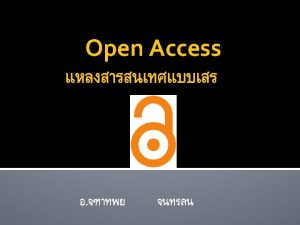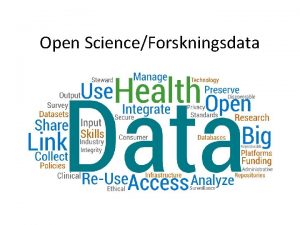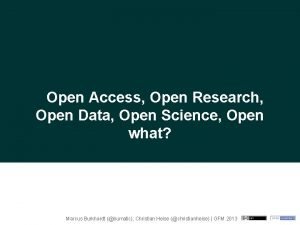Diamond Open Access Models for Journals A perspective











- Slides: 11

Diamond Open Access Models for Journals A perspective from KU: Pro‘s, con‘s & moving forward Tom Mosterd & Max Mosterd Bielefeld, February 26 th, 2019 Knowledge Unlatched

Topics 2 § The current space for non-APC publishing models: Diamond Open Access § Challenges § The role of Knowledge Unlatched (KU) § Learnings so far § A transformative approach Knowledge Unlatched

The current space for non-APC publishing models: Diamond Open Access § § Diamond Open Access: Supporting by a consortium Open Library of Humanities, Scoap 3 & KU Select Journals Supporters: 3000+ Journals*: 11+ Supporters: 210+ Journals: 27 journals Supporters**: 120+ Journals: 25+ journals *Not all journals are fully covered by SCOAP 3 ** KU Journal Supporters Only 3 Knowledge Unlatched

Diamond Open Access: Pro’s and con’s 4 § Pro’s: § Increasing attention for non-APC models as an alternative for Gold Open Access, especially for the Humanities & Social Sciences § Strong community supported approach to coordinate global funding § Can offer a more viable approach for the HSS where APC-funding is limited to non-existent § Removes financial burden for authors, smooth author-experience § Cons: § Can be applied on a large scale, for subscription journals? § Challenging to implement without dedicated funding (e. g. APCs for Gold) § Mixed-publisher package with single titles difficult to move budget* § For new OA titles, more difficult to find funding* § *For KU Select Journals (may not apply for OLH / SCOAP 3) Knowledge Unlatched

Feedback from institutions: Learnings So Far 5 § Argument showing ”a better deal” compared to an APC-driven model works for research intensive institutions § Much support for the APC-free component in theory, yet less in practice § More challenging to convince access-focused institutions to act § Often challenging to organize funding internally § For subscription journals, often: § Significant part of the subscribing institutions have limited publication output § Considerable number of institutions with researchers publishing in the journal are not subscribed Knowledge Unlatched

The role of Knowledge Unlatched § 6 Coordination between publishers & funders (libraries, consortia & research institutions) Knowledge Unlatched

Low Readership High Based On Experience: Can Identify Four Main Customer Segments Publications Low 7 High Knowledge Unlatched

Focussing on the read-component § Example model: Subscribe to open deals (diamond) § Readership value: normal distribution of cost per use metrics, signalling high access value to many current subscribers (e. g. readership value) Journal portfolio: best for a focussed portfolio of journal content with consolidated customer base in terms of regions § 8 § Pros: § Institutional option to internally migrate budget is obvious for a portfolio § Adding new funding channels, such as funders can directly imply a subscribe to open discount to existing subscribers § In theory, clear incentives for all to take part § Cons: § Timing challenging to reach, inform, and convince all current subscribers about a proposed flip within, say, a one-year time-frame § Free rider risk and consequential double-dipping negotiations Knowledge Unlatched

Focussing on the publish-component 9 § Example model: National / large consortia deals § Publisher value: normal distribution of publication output by institutions, signalling high publisher value to many current subscribers (e. g. publication value) § Journal portfolio: best for a focussed portfolio of journal content with consolidated customer base in terms of regions § Pros: § Potentially transparent and pragmatic model to realise full OA § Allow for large volume deals of journals and comparatively rapid transition § May allow for consortia to reallocate funding amongst consortia members § Cons: § Timing challenging migrate budget from read-driven system to publicationdriven system for publication-intensive institutions § Difficult to cater for non-affiliated authors and less well-funded institutions § National consortia negotiations as the “box”, missing out on global perspective and possibly troubling transformation for others Knowledge Unlatched

KU Plan-S model 10 § Focus on hybrid/subscription journal portfolios from societies and traditional publishers § Global approach to support true transformation into full OA via a ‘framework’ deal Knowledge Unlatched

Thank you! Questions? Tom Mosterd & Max Mosterd Bielefeld, February 26 th, 2019 Knowledge Unlatched


